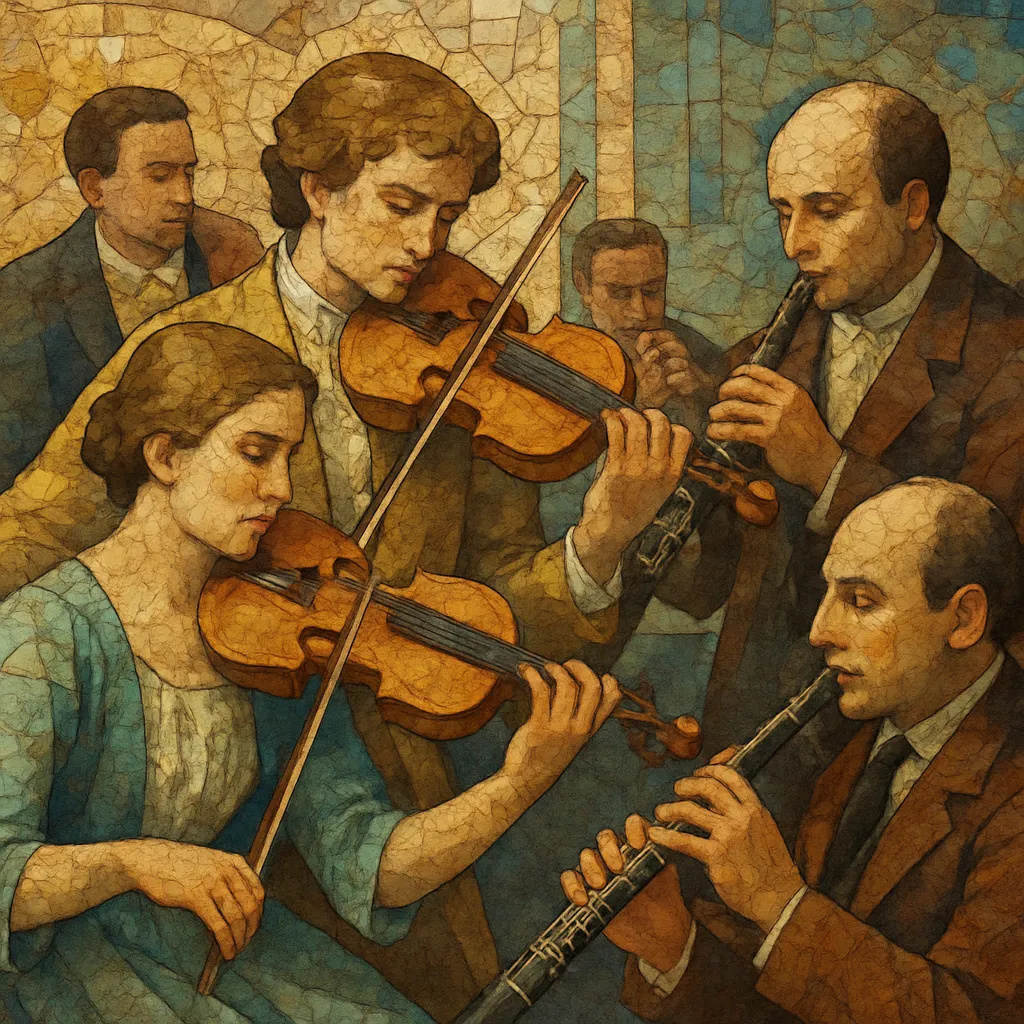Sinfonia concertante is a Classical-era hybrid that blends the symphony’s multi-movement, orchestral scale with the concerto’s virtuosic spotlighting of soloists—typically two to four players.
It favors elegant, balanced phrasing, clear textures, and lively dialogue between multiple solo instruments and the orchestra, often in a fast–slow–fast three-movement plan. Popularized in Paris and associated with the galant style, it became a showcase for wind instruments as well as string pairings (famously violin and viola).
The sinfonia concertante emerged in the 1770s, particularly at Paris’s Concert Spirituel, as public concert culture sought symphonic breadth with concerto-style virtuosity. It evolved from the Baroque concerto grosso (multiple soloists against an ensemble) and absorbed the Classical symphony’s formal clarity and orchestral palette.
Composers such as Johann Christian Bach, Carl Stamitz, Ignaz Pleyel, Giuseppe Cambini, François-Joseph Gossec, and Henri-Joseph Rigel wrote numerous symphonies concertantes for Paris and other European centers. Joseph Haydn and Wolfgang Amadeus Mozart brought the form to an artistic peak—Mozart’s Sinfonia Concertante for Violin and Viola in E-flat, K. 364/320d (1779), and Haydn’s Sinfonia concertante in B-flat, Hob. I:105 (1792), are prime exemplars, balancing lyrical slow movements with brilliant outer movements and tightly integrated ensemble-soloist interplay.
As the 19th century favored the grand, individual virtuoso concerto and the expanded symphony, the sinfonia concertante’s multi-soloist identity became less central. Still, its principle—concertante treatment of several principals within a symphonic frame—remained influential in orchestration practice and in occasional multi-soloist concertos.
The concertante ideal resurfaced in various guises: Sergei Prokofiev’s Sinfonia Concertante for Cello and Orchestra, Op. 125, reimagined the genre’s dialogic spirit; composers like Jean Françaix and Bohuslav Martinů also explored concertante textures. Most notably, the genre’s ethos informed the modern Concerto for Orchestra, where different orchestral sections assume soloistic roles across a symphonic canvas.


